- Home
- Military & Defense
- Happy birthday Marine Corps! Here are 37 powerful pictures of the Marine Corps through history
Happy birthday Marine Corps! Here are 37 powerful pictures of the Marine Corps through history
Created in 1798, the Marine Corps Band was called "The President's Own" by President Jefferson during his inaugural ball. Since then, the band has played at every presidential inauguration. Here's the band in 1893.

In the early 1900s, Marine forces were active in China and the Philippines. This photo from 1907 shows Marines posing in front of the Great Sphinx in Egypt.
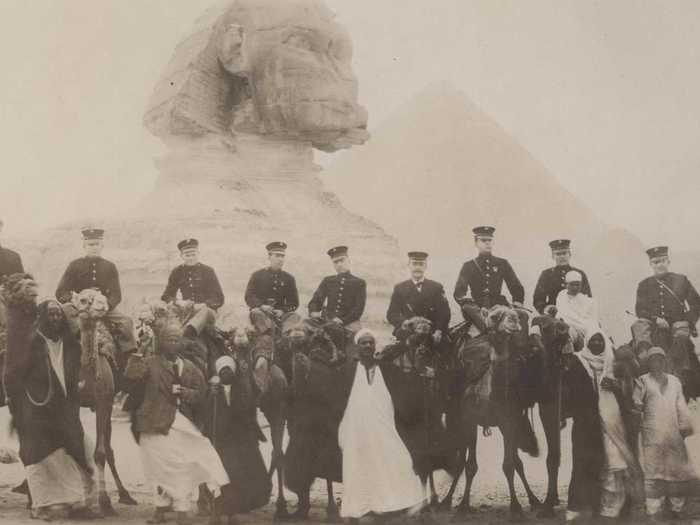
World War I was characterized by trench warfare and the use of poison gas. Mortars were useful in muddy trenches because a mortar round could be aimed to fall directly into trenches — unlike artillery shells. These Marines are posing with a German trench mortar captured in France in 1918.
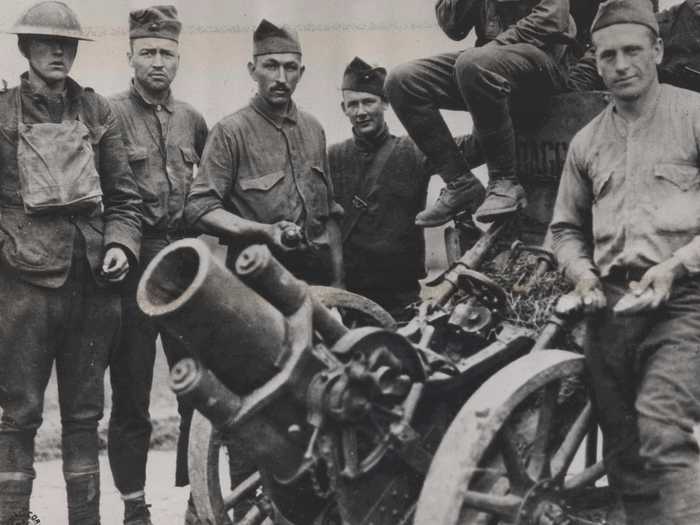
Another picture from 1918 shows Marines in France with gas masks.
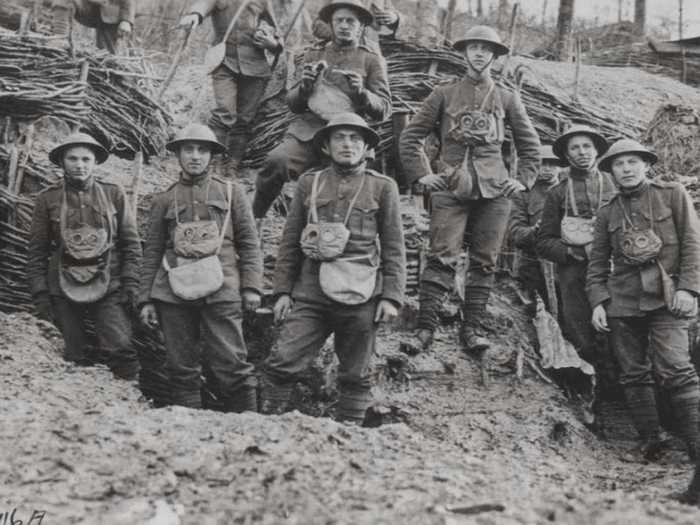
Here, Marines are practicing how to carry a wounded comrade during combat training in western Germany circa 1918. Approximately 2,400 Marines died in World War I.
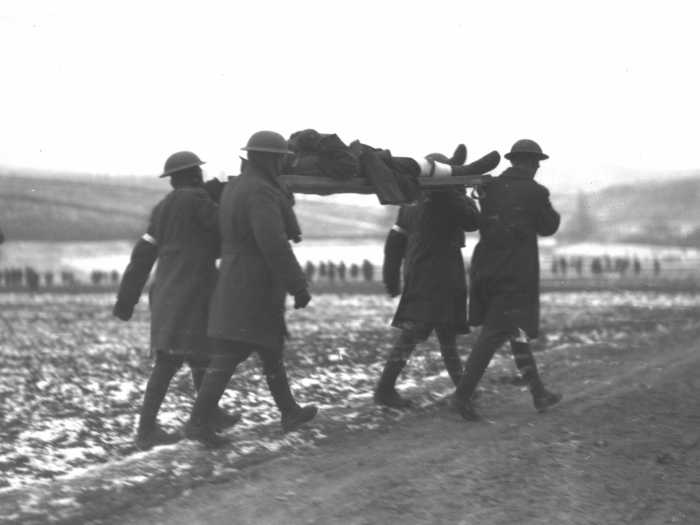
Experimental Marine Corps aviation began in conjunction with the Navy around 1919. This photo from 1930 shows a Marine flying a Grumman FF-2 Navy plane. Within a decade the Marines had their first aircraft wing, which is now based in Okinawa, Japan.
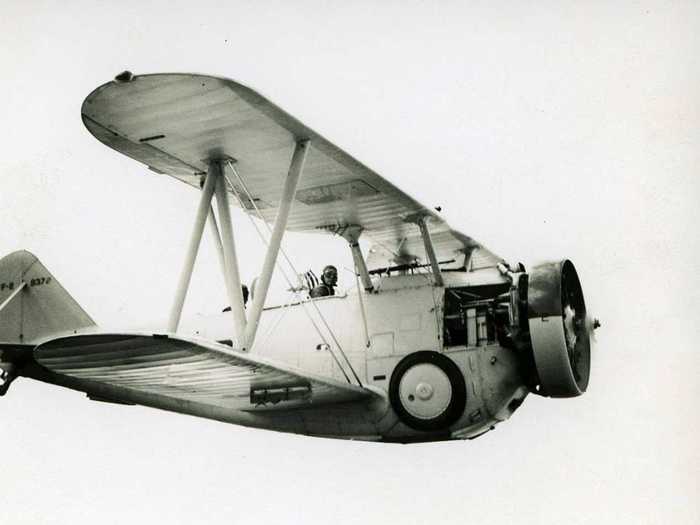
Japan's surprise attack on Pearl Harbor in 1941 triggered America's entrance into World War II. This photo shows a Marine holding a piece of shrapnel removed from his arm after the attack.
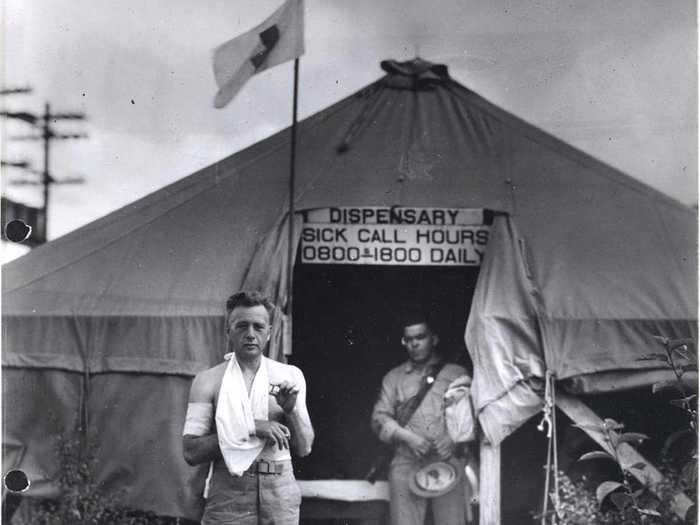
Marines on a landing barge take one last look at a "good-luck picture" of a Pin-Up girl in 1943 while approaching the Japanese-held Tarawa island.
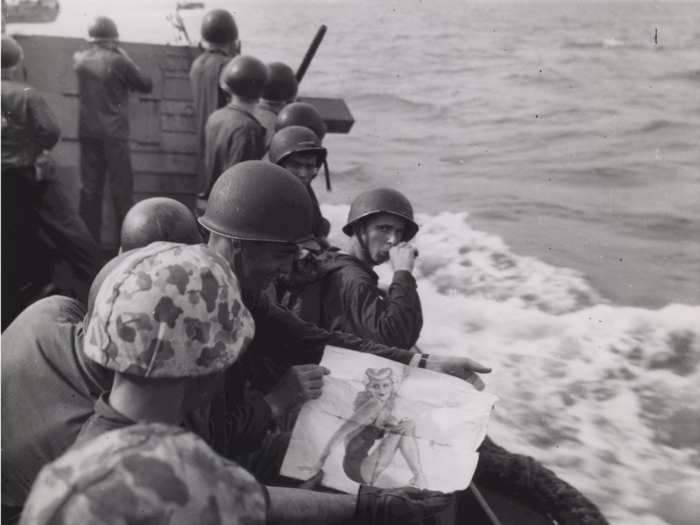
In the months after Pearl Harbor, Japanese forces expanded throughout the Western Pacific, prompting deployment of Marines to the tropical island of Guadalcanal. This 1943 photo shows two Marines waiting for “Chow Call,” or mealtime.
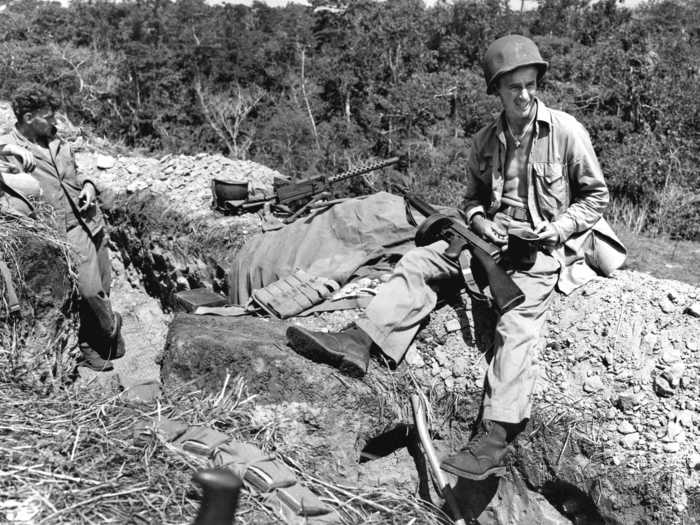
Amphibious warfare is a hallmark of the Marine Corps, as shown in this 1944 photo of Marines landing on the Japanese island of Saipan during World War II.
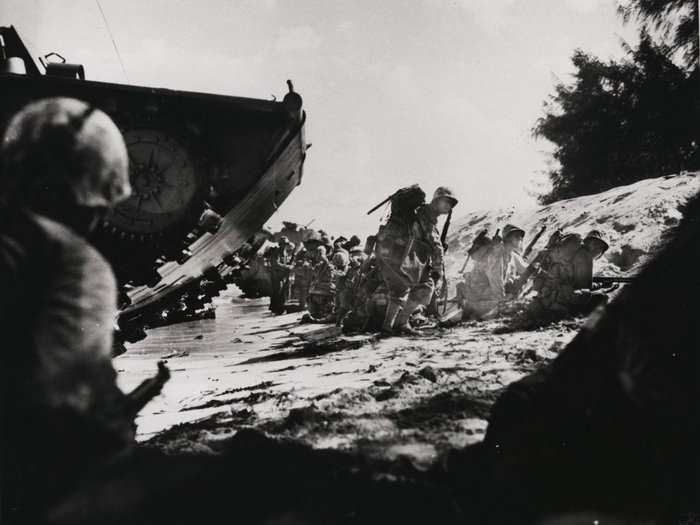
Surrounded by a sea of mud, Marines stationed in the South Pacific island of Bougainville haul ammunition to the front line.
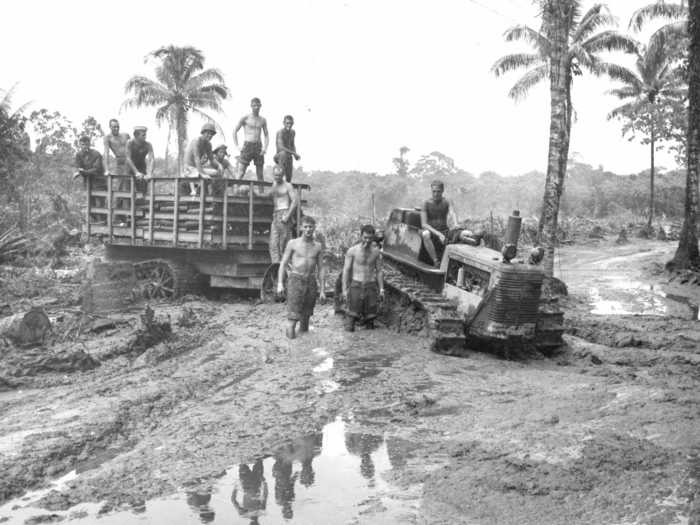
Marines come to collect their letters from home while stationed in Bougainville.
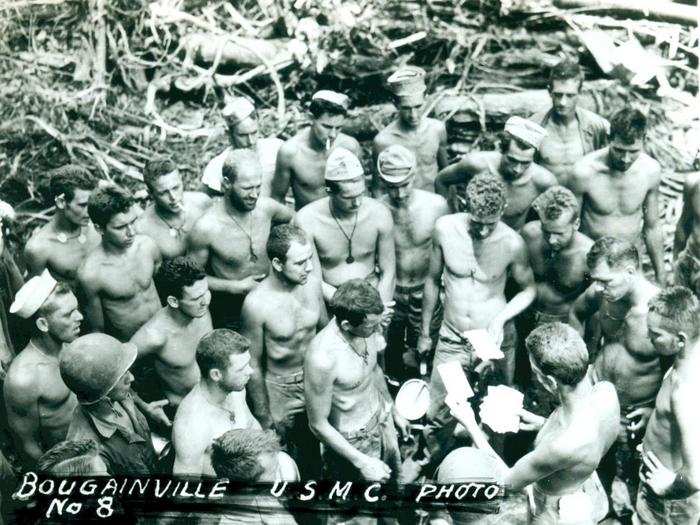
Marines from the Navajo tribe used their native language to send coded radio transmissions to units overseas. Here are Navajo code talkers from 1943 whose delivery was said to be faster and more accurate than Morse Code. Intercepted Navajo codes were never successfully deciphered by the enemy.
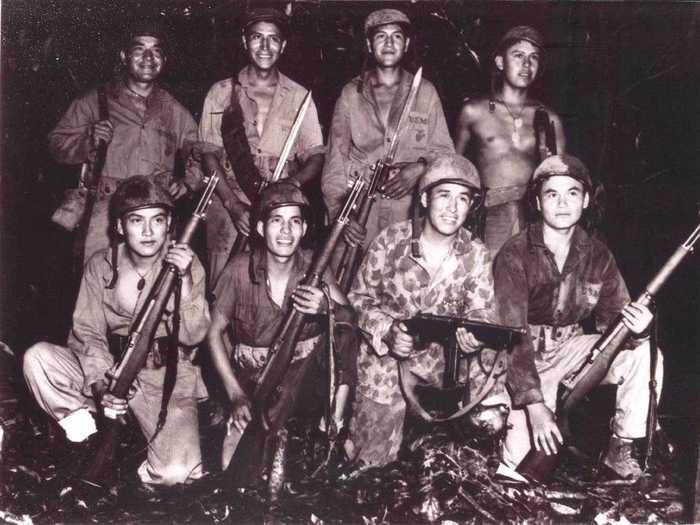
Wearing hardly any protective gear, Marine artillerymen plug their ears after launching a 155mm Howitzer round in northern Iwo Jima.
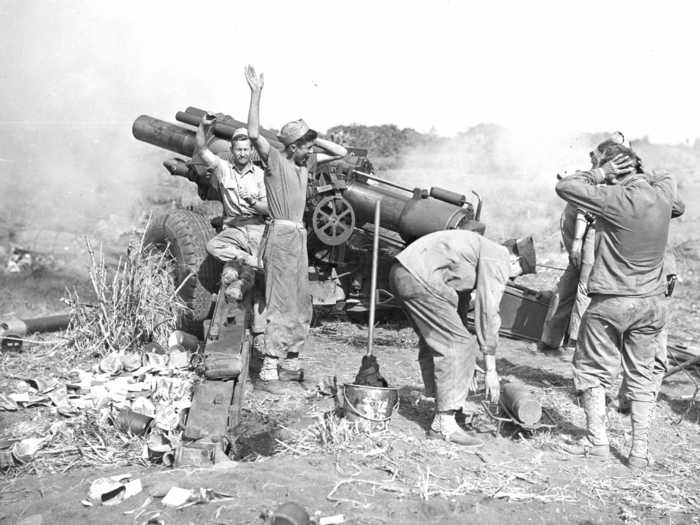
This 1944 photo shows a Navy corpsman giving a wounded Marine blood plasma on an island in the Pacific. Marines captured the island in 24 hours with help from the heaviest naval and air bombardment ever at that time.
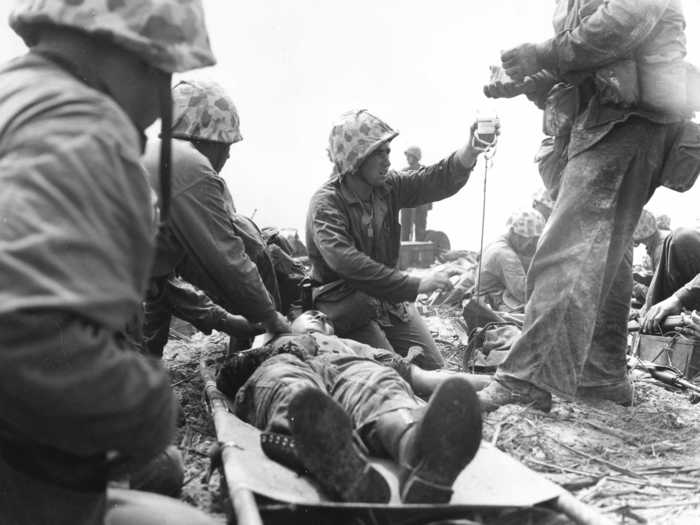
Iwo Jima was prime real estate for Americans to launch air raids against Japan, but the island was heavily guarded by Japanese forces. Marines are seen here battling at the foot of Mount Suribachi.
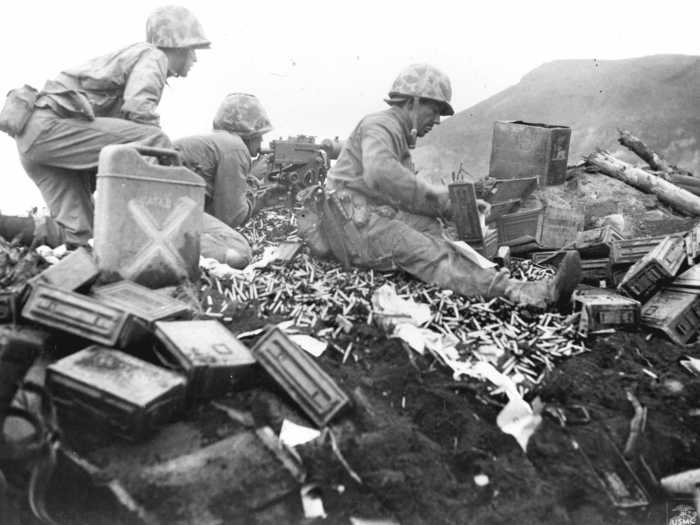
Marines raise the American flag at the summit of Mount Suribachi during the battle for Iwo Jima in 1945. This enduring image is actually of the second flag raised on the mountain that day. The first flag was too small to be seen easily.
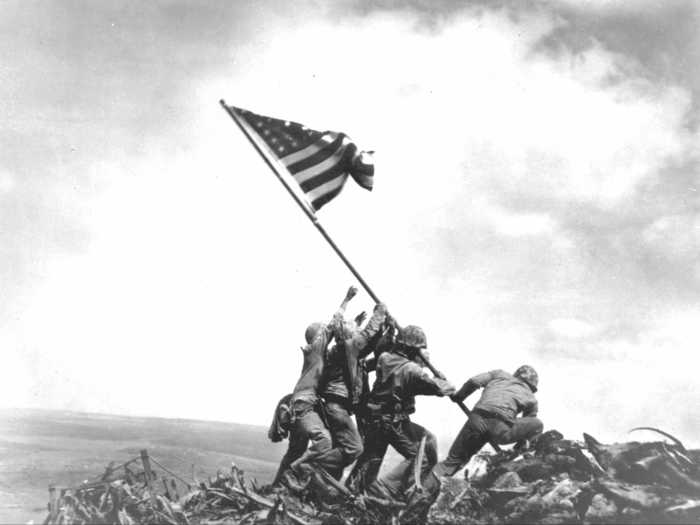
After hearing the news of Japan's surrender, Marines joyfully pose atop an amphibian tractor to celebrate the end of World War II and "Victory over Japan Day" in 1945.
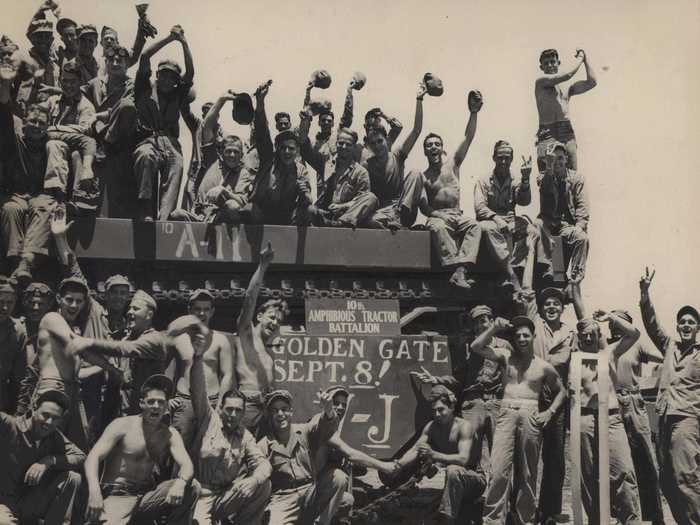
The North Korean invasion of South Korea prompted America's entry in the Korean War. This photo from 1950 shows both Marine air and ground units supporting this operation.
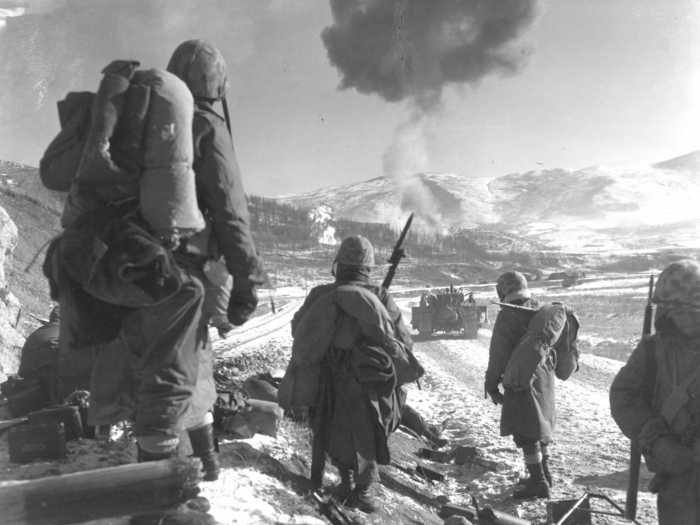
Meanwhile in America, women began training at the Marine Corps Recruit Depot in Parris Island, South Carolina, in 1949. Today, all female recruits are still trained and transformed at Parris Island.
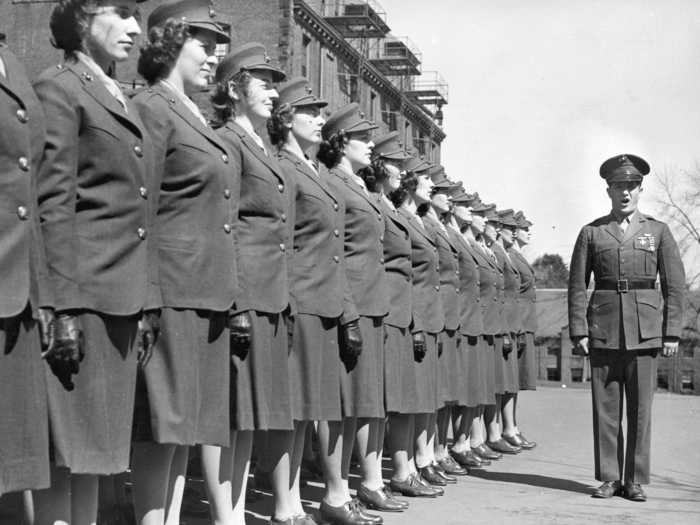
Marines line up at this makeshift Post Exchange in Korea to receive simple comfort items like candy, cigarettes, and soft drinks.
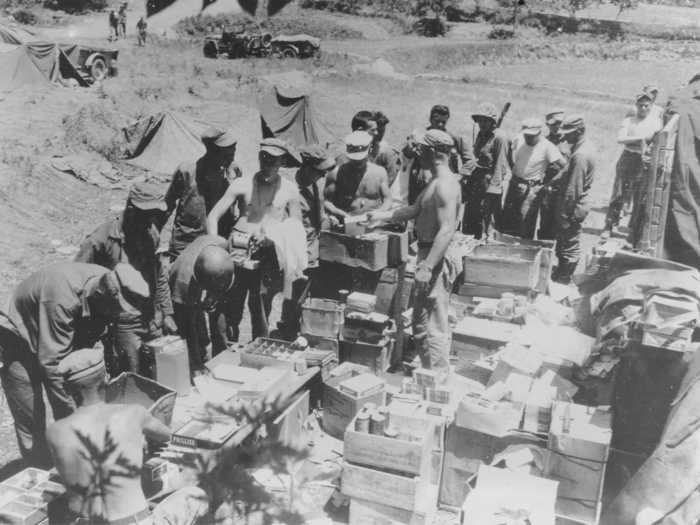
Lasting two decades, the Vietnam War was the next major US conflict. This Marine truck passes under a welcome banner at the entrance of the Vietnamese city Danang back in 1965.
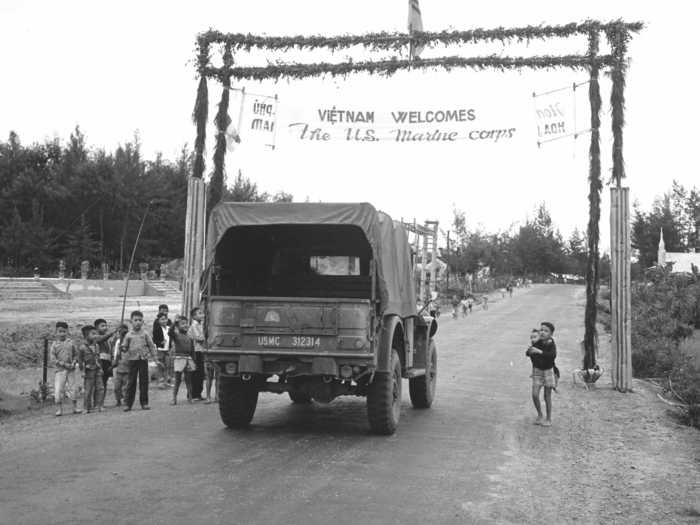
Marines scatter as a CH-46 helicopter explodes after it was shot down during combat in Vietnam. At least 13 Marines were reported killed in the crash, with another three badly burned.
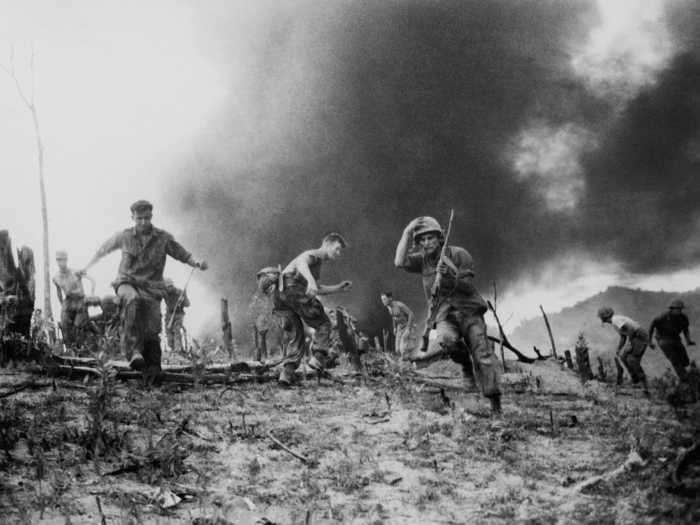
Khe Sanh, in southern Vietnam, had the heaviest rocket and artillery attacks from the North Vietnamese troops. Here is a message from a Marine stationed there in 1968.
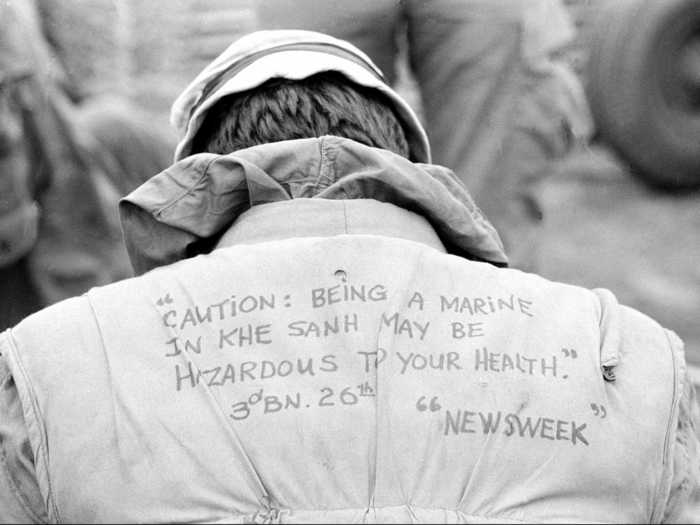
Here, an exhausted Marine takes a quick break from fighting in Hue, Vietnam, in 1968.
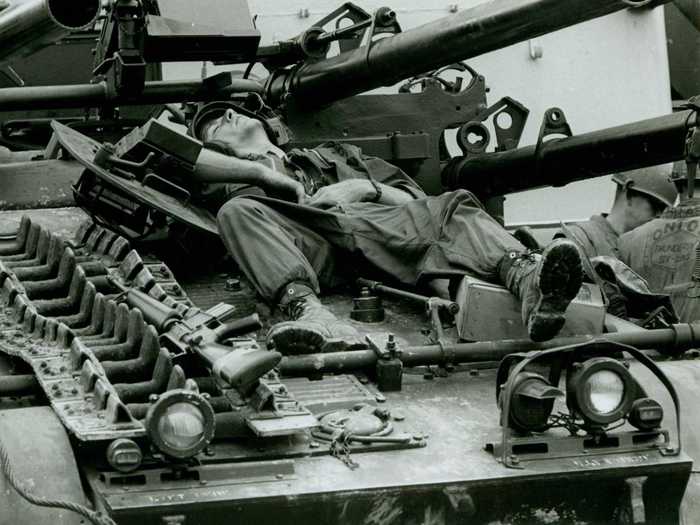
A Marine dismantles a 122mm Vietnamese field piece that was captured during battle in 1969.
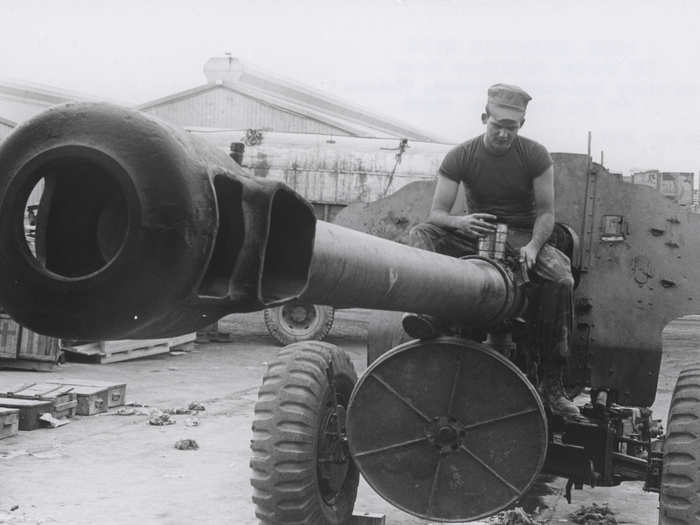
Marines in this 1969 photo carry supplies from a cargo helicopter to their temporary base near Da Nang, Vietnam.
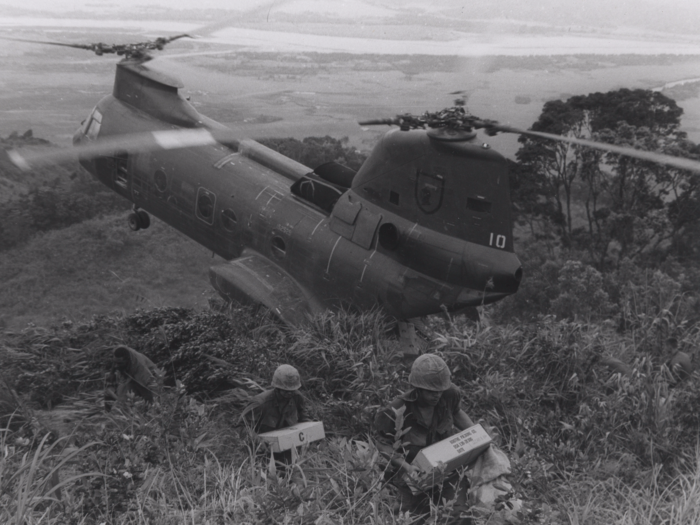
A Marine fills out his voter registration card for the coming 1969 presidential election.
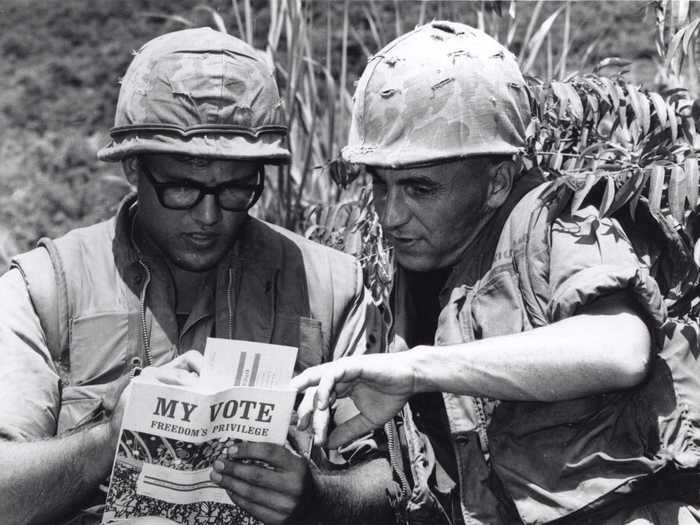
In 1983 the US Embassy in Beirut was bombed by Islamic terrorists. It was the deadliest attack on a US diplomatic mission up to that time. This photo shows a Marine wearing a gas mask while digging through the rubble to find survivors.
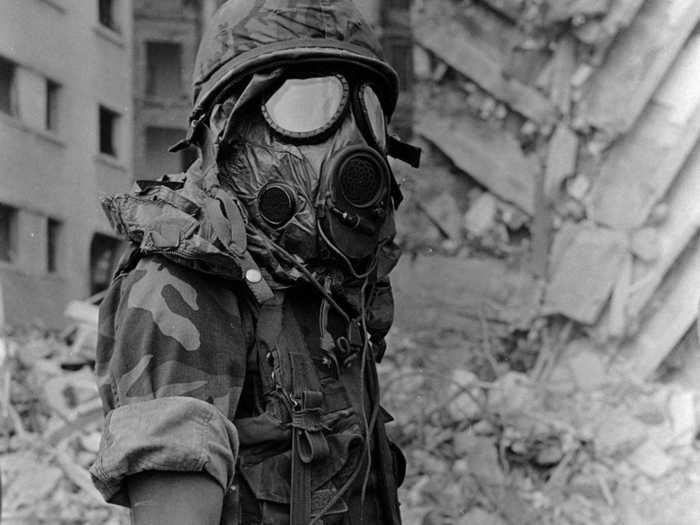
Marines cover each other with M16A2 assault rifles as they prepare to enter one of Saddam Hussein's palaces in Baghdad during Operation Iraqi Freedom in 2003.
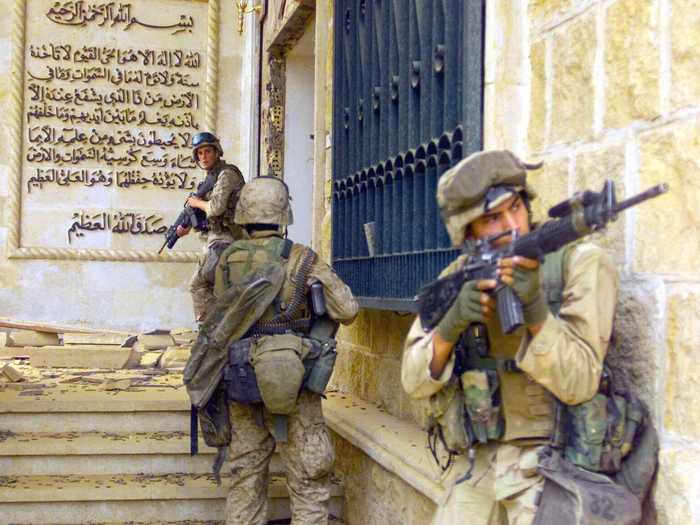
In this iconic photo, a Marine watches as a statue of Saddam Hussein falls in central Baghdad's Firdaus Square on April 9, 2003.
One of the single greatest battles for Marines in Iraq was held in Fallujah, the "City of Mosques," in 2004. It was the only battle in Marine Corps history in which fliers were dropped to alert civilians that troops were coming and to equally unnerve the enemy.
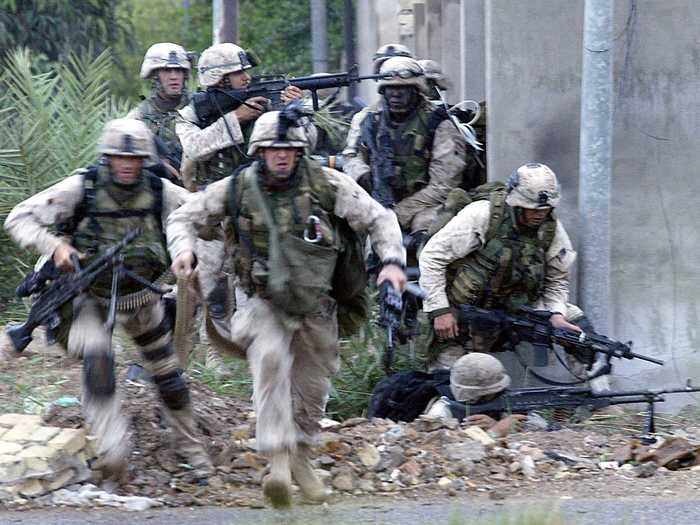
Marine Lance Corporal James Blake Miller, dubbed "Marlboro Marine," became the face of the Iraq war after his photo was taken by a Los Angeles Times reporter in Fallujah in 2004.
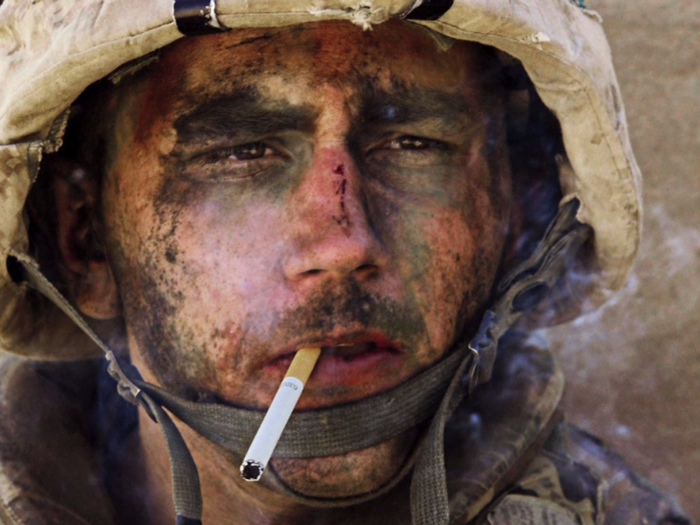
The "Darkhorse" Marines in the 3rd Battalion, 5th Regiment, suffered the highest casualty rate of any Marine unit deployed to the Helmand province in southern Afghanistan following the heavy Marine-led assault on Marjah. Here is a photo of them under enemy sniper fire in 2010.
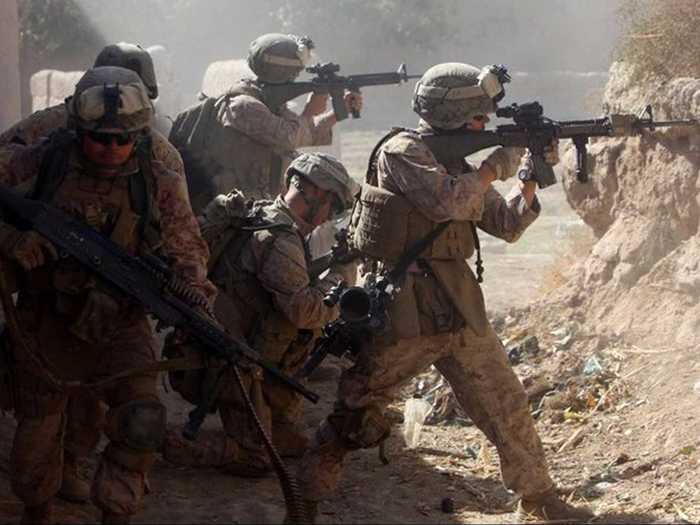
Built in 1861, the Marine Corps Recruit Depot in Parris Island consists of 8,095 acres of various types of terrain for the recruits to use as their learning facility. About 20,000 recruits are trained here every year.
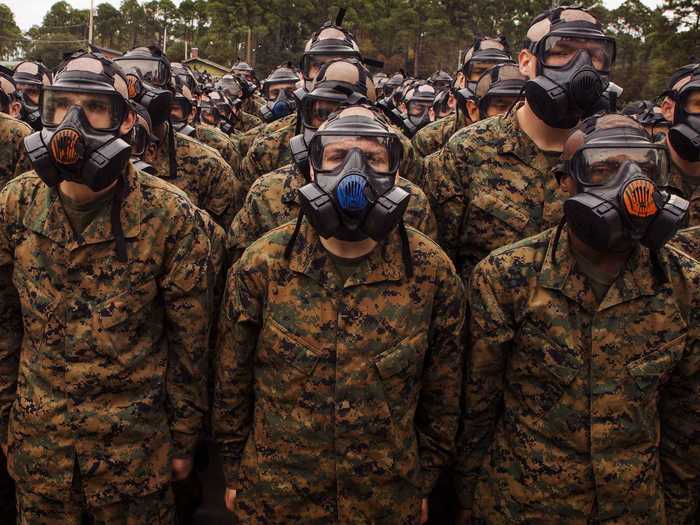
Every recruit received at Parris Island is transformed by legendary Marine drill instructors like the one pictured here. Marine recruits are typically younger than the Corps' sister service branches, and each DI wants to ensure that recruits can survive combat.
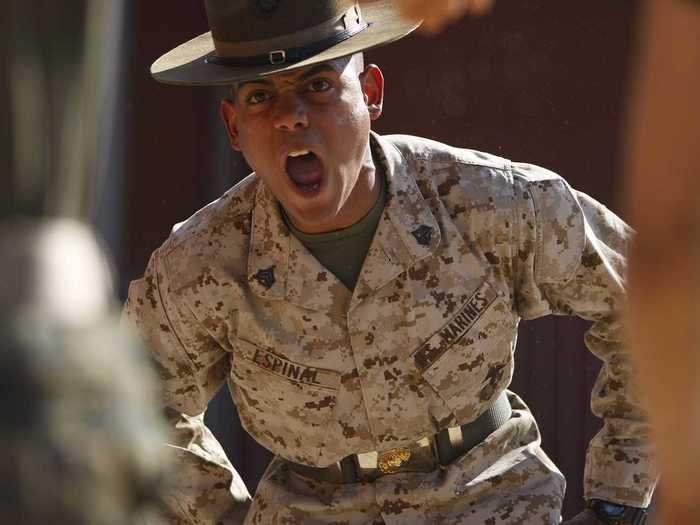
Today more than 205,000 Marines are serving America by air, land, and sea. The Marines pictured here respond "I do" during the oath of office at the US Naval Academy Class of 2012 graduation and commissioning ceremony.
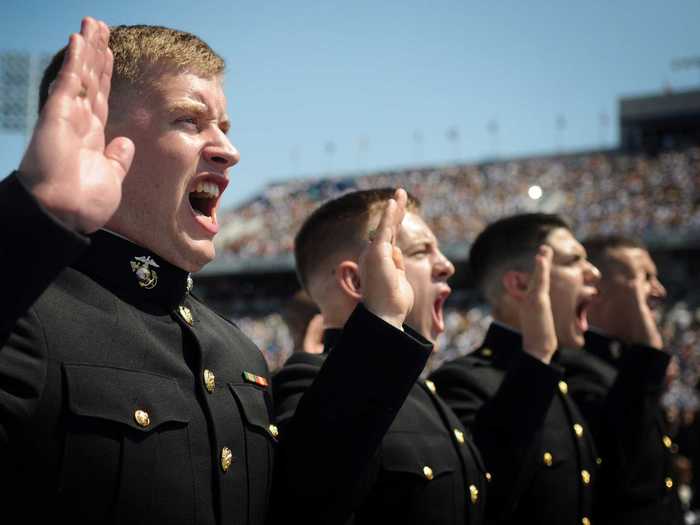
Advertisement